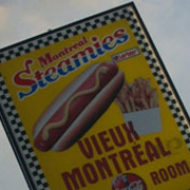In the comments to my last Sage post, Ted wrote
I think there are ways to begin publishing scholarly work that would circumvent unnecessarily restrictive publishers altogether. That, of course, opens up the larger issue of credibility, i.e., whether one’s university would consider publications that don’t appear under the imprimatur of a university or commercial scholarly press as worthwhile. Nevertheless, it’s something worth exploring….
We are indeed already there, and I don’t even think credibility is the main issue. Right now, open access has a much bigger track record in the sciences than the humanities, but there are examples of humanities journals catching up. First Monday, in which I published a piece not long ago, is open access and has a strong readership. And in new media studies, anyway, it clocks like a peer-reviewed journal. The Canadian Journal of Communication went open access and as a result, it’s articles are much more widely read. Will Straw tells me that his “Exhausted Commodities” essay in that journal gets a great deal of play in part because it is so accessible. CJC is also a peer-reviewed journal and at least in Canada clocks like that on tenure reviews.
Of course, Bad Subjects was open access before the concept existed, though we never saw ourselves as a traditional peer-reviewed academic journal (quite to the contrary).
The advantages to open access are obvious, but there are some major problems with it as well:
1. Open access eliminates the subscriber revenue stream. This means that journals that want print runs need some other source of income. Or they need to just post .pdfs and let people who want to read them print them for themselves. The fact is that with the large number of databases and library subscribers, more and more journals are consumed this way already.
2. Another side-effect of eliminating subscriber revenue is displacing ever more labor onto editors. If a journal doesn’t have a staff paid to produce it, then the labor falls to the editors. Given the sad state of copyediting these days, it’s not a huge leap, but it does significantly multiply the number of hours needed to produce a journal. For instance, for the Bad Subjects issues where I both edited and coded, I would say that I spent as much time coding as I did editing — a doubling of the labor. Until there is a way to pay people to produce journals as in the print model, I think we have a real problem with a purely online, open-access model. Scholarly associations can make this part of their dues and subsidize their own journals, but other journals will lose out unless they can secure some other kind of funding.
3. Also, bandwidth and storage are not free, and so either universities have to pony up the space, or libraries need to pool their resources to create some kind of consortium space for open access journals.
4. In Canada anyway, the funding agencies seem to favor open-access, but since they don’t guarantee funding for a long period of time, nor do they always pay for all of a journal’s operating costs, it’s a bit of gamble. It also means that you are submitting your journals operations to the oversight of a funding agency, which is a very different body from an editorial board.
To me, money and labor seem like the main obstacles to successful open access publishing in a wider sphere of the humanities. But for now, there are at least a few options. I can say next time I want to publish something for a big readership, I will be sending it to CJC.
As for books, well, I don’t see e-books replacing the paper-and-glue kind anytime soon (and I still love the codex as a technology), but that’s more Ted’s department than mine.

